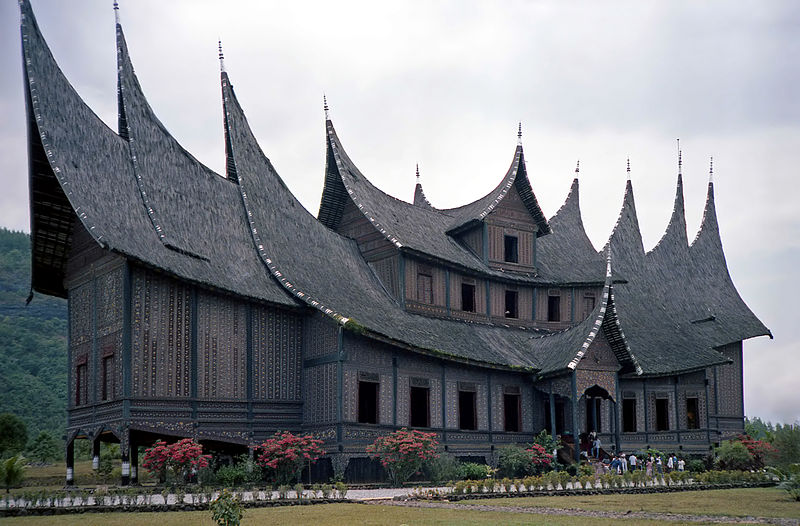Indonesia has a variety of unique and interesting literary works. One of the unique and interesting literary works from Indonesia is pantun. Pantun is an ancient form of poetry that originates from the Malay literary culture. The word Pantun itself has a long history. This word has a similarity from the Javanese language, namely the word parik which means pari, which means paribasa or proverb in Malay. This meaning is also adjacent to umpama and seloka which originate in Indian vocabulary.
Pantun is an oral literature that was first recorded by Haji Ibrahim Datuk Kaya Muda Riau, a literary contemporary with the legend of Malay literature, Raja Ali Haji.
The anthology of the first pantun is entitled “The Association of Malay Pantun.” The Pantun genre is the most enduring genre. Pantun is an old type of poetry that is very widely known in Indonesian languages. Pantun comes from the word patun in the Minang Kabau language which means “guide”.
Pantun refers to a word in the Javanese language, for example, known as parikan. While in Sundanese it is known as Paparik and in Batak it is known as umpasa (read: uppasa).
In general, rhymes consist of four arrays (or four lines if written), each line consisting of 8–12 syllables, ending in rhymes with a-b a-b and a-a-a-a pattern (not a-a-b-b, or a-b-b-a). Pantun was originally written as oral literature, but now there are also written poetry. All rhyme forms consist of two parts: Sampiran and Isi. Sampiran are the first two lines, often related to nature (characterizing the agrarian culture of the people who support it), and usually have nothing to do with the second part which conveys a purpose other than delivering rhymes.
After that, in its development various types of rhymes emerged. Namely, in terms of the content of the pantun it can be divided into:
- Pantun children,
- Pantun love and affection,
- Pantun about the customs and way of life of the Malay community,
- Pantun riddles,
- Pantun praise or greeting, for example in welcoming guests in an assembly,
- Pantun advice, for example the importance of character,
- Religious and manners poetry,
- Pantun story
After waiting for a process of up to two years, finally the Pantun Tradition was declared an Intangible Cultural Heritage on December 17, 2020. The determination took place at the UN Educational, Scientific and Cultural Organization (UNESCO) session 15th session of the Intergovernmental Committee for the Safeguarding of the Intangible Cultural Heritage at UNESCO Headquarters in Paris, France.
Director General of Culture, Ministry of Education and Culture, Hilmar Farid said in Jakarta, Friday (18/12/2020), this momentum is the first step to preserve the tradition of Pantun. This award is expected to further grow Pantun communities, prepare teaching materials so that students are encouraged to use rhymes, and increase appreciation for rhyme activists in the country.
The Pantun nomination jointly proposed by Indonesia and Malaysia is the 11th Indonesian cultural tradition recognized by UNESCO. Previously, Pencak Silat was encrypted as an Intangible Cultural Heritage on December 12, 2019.
UNESCO considers Pantun to have an important meaning for the Malay community not only as a means of social communication but also rich in values that serve as moral guidelines. The message conveyed through the Pantun generally emphasizes the balance and harmony of human relations.
For Indonesia, the success of establishing Pantun as an Intangible Cultural Heritage cannot be separated from the active involvement of various stakeholders, both the central and local governments, as well as various related communities. For example, the Oral Tradition Association (ATL), Malay Customary Institution, Dangdung Morro Joget Community, Sungai Six Dangdung Joget Community, Penyengat Island Gazal Community, Mak Yong Heritage Theater Studio, Kijang Keke Village, as well as a number of Indonesian individuals and singer.
Representative of the Permanent Delegation of the Republic of Indonesia to UNESCO, Surya Rosa Putra in his statement said that as the first Indonesian nomination to be submitted together with other countries, the inscription of Pantun has important meaning for Indonesia and Malaysia. “(Pantun) reflects the closeness of two allied countries who share Malay identity, culture and traditions,” he said.
Pantun is the most widespread spoken form in Southeast Asia and has been used in the region for at least 500 years. Pantun is a means of expressing love, with more than 70 percent of the lyrics devoted to expressing love for a partner, family, community, and nature.
Therefore, in the future, Indonesia and Malaysia are committed to continuing to make various efforts to ensure the protection of Pantun as an Intangible Cultural Heritage through active involvement of local communities in both countries. Pantun is also preserved by being taught formally in schools and through artistic activities. Are you interested in this article? Come on, get other interesting information from Indonesiar.com.






























